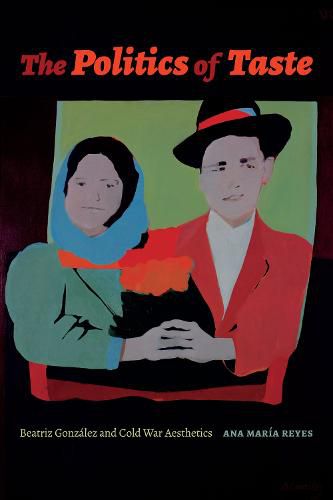Readings Newsletter
Become a Readings Member to make your shopping experience even easier.
Sign in or sign up for free!
You’re not far away from qualifying for FREE standard shipping within Australia
You’ve qualified for FREE standard shipping within Australia
The cart is loading…






In The Politics of Taste Ana Maria Reyes examines the works of Colombian artist Beatriz Gonzalez and Argentine-born art critic, Marta Traba, who championed Gonzalez’s art during Colombia’s National Front coalition government (1958-74). During this critical period in Latin American art, artistic practice, art criticism, and institutional objectives came into strenuous yet productive tension. While Gonzalez’s triumphant debut excited critics who wanted to cast Colombian art as modern, sophisticated, and universal, her turn to urban lowbrow culture proved deeply unsettling. Traba praised Gonzalez’s cursi (tacky) recycling aesthetic as daringly subversive and her strategic localism as resistant to U.S. cultural imperialism. Reyes reads Gonzalez’s and Traba’s complex visual and textual production and their intertwined careers against Cold War modernization programs that were deeply embedded in the elite’s fear of the masses and designed to avert Cuban-inspired revolution. In so doing, Reyes provides fresh insights into Colombia’s social anxieties and frustrations while highlighting how interrogations of taste became vital expressions of the growing discontent with the Colombian state.
$9.00 standard shipping within Australia
FREE standard shipping within Australia for orders over $100.00
Express & International shipping calculated at checkout
In The Politics of Taste Ana Maria Reyes examines the works of Colombian artist Beatriz Gonzalez and Argentine-born art critic, Marta Traba, who championed Gonzalez’s art during Colombia’s National Front coalition government (1958-74). During this critical period in Latin American art, artistic practice, art criticism, and institutional objectives came into strenuous yet productive tension. While Gonzalez’s triumphant debut excited critics who wanted to cast Colombian art as modern, sophisticated, and universal, her turn to urban lowbrow culture proved deeply unsettling. Traba praised Gonzalez’s cursi (tacky) recycling aesthetic as daringly subversive and her strategic localism as resistant to U.S. cultural imperialism. Reyes reads Gonzalez’s and Traba’s complex visual and textual production and their intertwined careers against Cold War modernization programs that were deeply embedded in the elite’s fear of the masses and designed to avert Cuban-inspired revolution. In so doing, Reyes provides fresh insights into Colombia’s social anxieties and frustrations while highlighting how interrogations of taste became vital expressions of the growing discontent with the Colombian state.